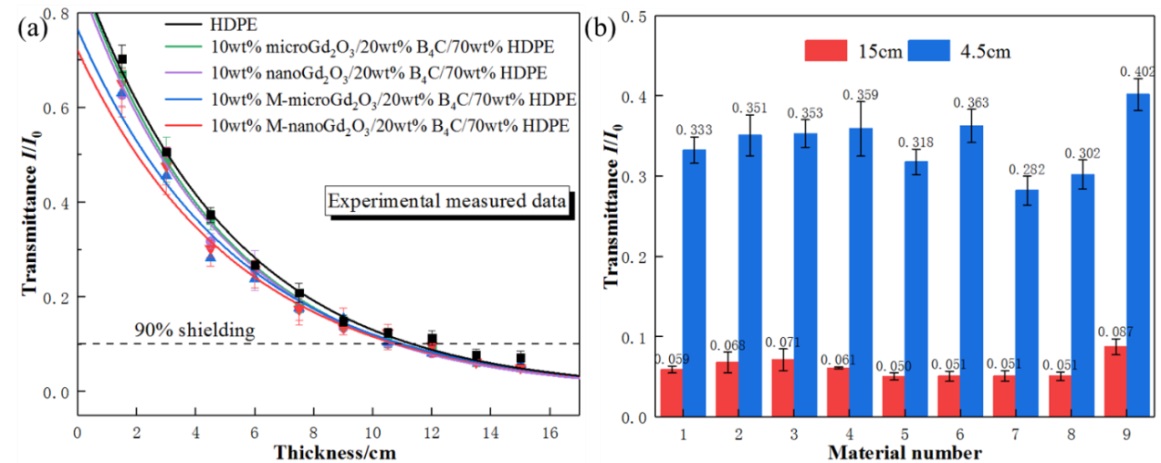
Dr. HUO Zhipeng and his student ZHAO Sheng from the Hefei Institutes of physical science (HFIPS) of the Chinese Academy of Sciences recently developed a lead-free neutron and gamma ray composite shielding material that has high shielding properties and is environmentally friendly. Their results were published on Nuclear Materials and Energy.
The composite, modified-gadolinium oxide/boron carbide/high density polyethylene (Gd2O3/B4C/HDPE), was tested safe and effective to shield neutron and gamma rays through a series of intricate and comprehensive experiments.
Neutron, as an electrically neutral particle, has a strong penetrability and always emits secondary gamma rays during particle collision process. The scientific and efficient scheme of shielding neutron is to select high Z (atomic number), low Z materials, and neutron absorbing materials simultaneously for combined shielding. However, lead-containing materials are restricted in application with biological toxicity.
Rare earth element gadolinium, usually exists in the form of non-toxic Gd2O3 in nature, has always shown high average thermal neutron absorption, high temperature resistance and good gamma shielding performance.
The researchers studied the shielding mechanism first, and then adopted the coupling agents to modify the surface of Gd2O3 to improve the interfacial compatibility and dispersion of Gd2O3 in the matrix.
"It is lead-free and poses no threat to the environment or humans," said Dr. HUO, who has been engaged in radiation and environmental protection for years.
He further explained how this radiation shielding system worked. Fast neutrons collide with gadolinium (Gd) inelastically, and collide elastically with hydrogen until they become thermal neutrons, finally, absorbed by high Z element Gd and boron.
The experimental results show that the neutron shielding rate of the composite can reach 98% under the condition of 15 cm thickness in Cf-252 environment.
Its comprehensive shielding performance is better than conventional boron-polyethylene collimating shielding, and it is suitable for neutron spectrum and gamma spectrum diagnosis system of Experimental Advanced Superconducting Tokamak (EAST). It is expected to be a promising radiation shielding material for neutron-gamma mixed fields, according to the researchers.

Fig. 1. (a) Comparison of neutron transmittance between nano/micro composite materials and modified nano/micro composite materials (b) Comparison of neutron transmittance of various composite materials at thickness of 4.5 cm and 15 cm. (Image by HUO Zhiping)

Fig. 2. Schematic diagram of shielding mechanism of modified nano composite shielding material. (Image by HUO Zhiping)

86-10-68597521 (day)
86-10-68597289 (night)

86-10-68511095 (day)
86-10-68512458 (night)

cas_en@cas.cn

52 Sanlihe Rd., Xicheng District,
Beijing, China (100864)

